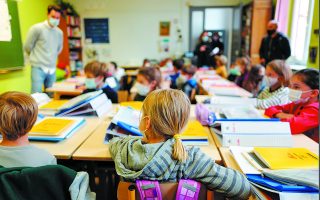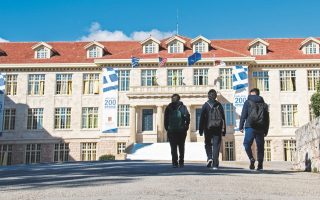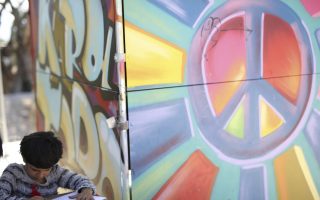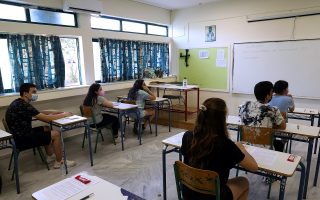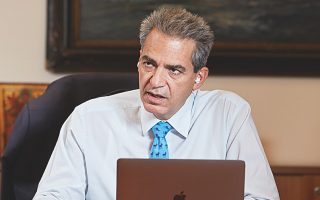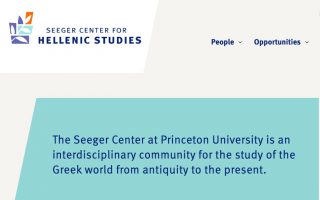Kids from 94 countries in Greece
Greek schools are trying to integrate their foreign pupils, mostly from migrant families
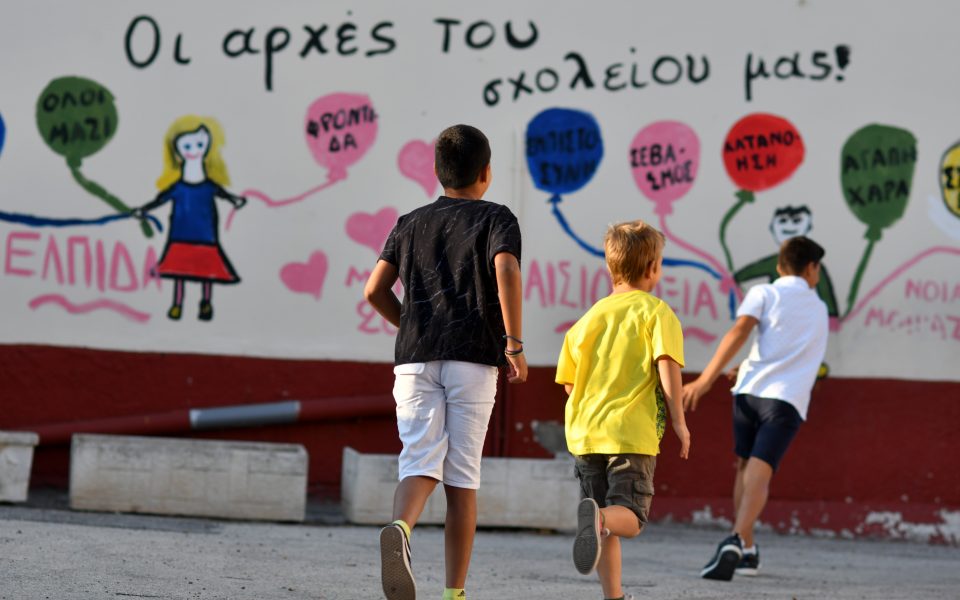
A total of 26,015 students born outside Greece attend Greek elementary and high schools. The children, aged 5-17, make up about 2% of the total number of pupils in Greece.
The education system is trying to manage and integrate its foreign pupils, with most of them coming from families who left their country in search of a better future. Many of them unavoidably face difficulties from being in a foreign place whose language they do not know. The online education enforced these last two years due to the coronavirus pandemic has not made it easier for them to integrate.
According to the latest data provided by the Ministry of Education, these students come from 94 countries. The vast majority come from neighboring countries, but there are also students – in single figures – from countries such as Chile, the Dominican Republic, El Salvador, Rwanda, Senegal, Trinidad and Tobago and Vietnam.
The Attica region has the largest number of foreign pupils (10,220). But, according to a high-ranking Education Ministry official, “after the middle of 2020, new enrollments became more difficult, because schools were full.”
Albanians account for the great majority of foreign pupils; at the end of 2021 there were 15,532 Albanians in primary and secondary education, followed by pupils from Afghanistan (1,059), Georgia (600), Iraq (561) and Syria (481), reflecting the more recent migration inflows from the Middle East and Central Asia.
Since mid-2020, there has been an increasing number of applications from Turkish parents to enroll their children in middle schools. According to an Education Ministry official, these parents, who arrived in Greece both with and without passports, are usually of a high economic and educational level and are considered by Turkey as regime opponents.
At the same time, the number of African applicants has also increased. These are children of families who had migrated to Turkey and then joined the refugees from Afghanistan, Syria and other countries in crossing the Aegean Sea to arrive on Greek islands.
At the start of the 2020-21 school year, elementary schools in central Athens welcomed a disproportionally large number of refugees after the disastrous fire that gutted the migrant camp on the island of Lesvos in September 2020. Even though rebuilding started immediately, as well as the construction of other facilities for migrants, a large number of migrants moved to mainland Greece, with most settling in the Athens area.
The large number of applications strained school resources and the burden increased after the earthquake that hit the island of Samos in October 2020, which prompted new people movements and new enrollment applications.
Officials say care is taken to distribute foreign students across all classes and not create majority-foreign classrooms where unfamiliarity with the language leads to delays in teaching the official curriculum. But, even then, some areas in Athens have disproportionate numbers of foreigners, because it is in those areas that NGOs active in the resettlement of migrants choose to lease property.
Areas of foreign pupil concentration include the neighborhoods around Patission Street, as well as the neighborhoods of Sepolia, Omonia, Exarchia, Kerameikos and Pangrati. There are also many applications on behalf of children from China and Egypt whose parents have been professionally active in Greece for years.
The pandemic
The coronavirus pandemic introduced more obstacles to the integration of foreign pupils into the education system. Many children lacked the technical equipment to follow online instruction or, if they were adequately equipped, their parents lacked the knowledge or language skills needed to help them. The United Nations Children’s Fund (UNICEF), in cooperation with the Ministry of Education, translated the ministry instruction manual on synchronous and asynchronous distance learning in 11 languages and dialects: English, French, Arabic, Turkish, Farsi, Pashto, Urdu, Amharic (Ethiopia’s official language), Lingala (the most prevalent indigenous language in the Democratic Republic of Congo), Kurmanji (Northern Kurdish) and Sorani (Central Kurdish).
Since the resumption of classes after the Christmas vacation, the ministry has also started a training program for teachers, “Education for Inclusion – Teacher support program in teaching children with a migrant/refugee background.” The program aims at improving teachers’ skills in interacting with multilingual and multicultural learning environments and, ultimately, helping foreign pupils stay in school and improve their performance.
